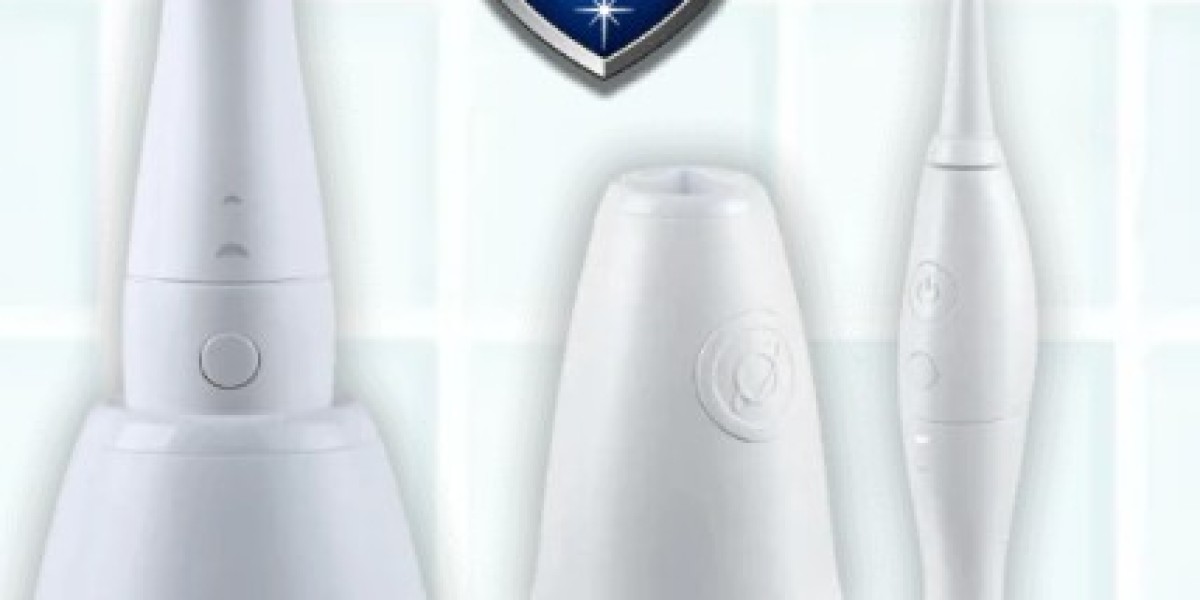Introduction to Toothbrush Sanitizers
Toothbrush sanitizers are essential tools designed to maintain the hygiene of your toothbrush and protect your oral health. These devices utilize various technologies to eliminate bacteria, viruses, and other microorganisms that can accumulate on toothbrush bristles. This comprehensive guide explores the different types of toothbrush sanitizers, their benefits, and important considerations to help you choose the right sanitizer for your needs.
How Toothbrush Sanitizers Work
Toothbrush sanitizers employ several methods to ensure your toothbrush is free from harmful germs. Here’s an overview of the most common technologies used:
UV-C Light Sanitizers
UV-C light sanitizers use ultraviolet light to kill microorganisms on toothbrush bristles. UV-C light is known for its germicidal properties, effectively disrupting the DNA or RNA of bacteria and viruses, rendering them inactive.
- Operation: The toothbrush is placed in a chamber equipped with UV-C light bulbs. The light is activated, typically for a duration of 3 to 5 minutes, to ensure thorough sanitization.
- Effectiveness: UV-C light sanitizers are highly effective at killing a broad spectrum of pathogens, including bacteria, viruses, and fungi.
Ozone Sanitizers
Ozone sanitizers utilize ozone gas (O₃) to disinfect toothbrushes. Ozone is a powerful oxidizing agent that can kill bacteria and viruses effectively.
- Operation: The toothbrush is placed inside an ozone chamber, where ozone gas is circulated around the brush. The ozone breaks down microorganisms on the brush surface.
- Effectiveness: Ozone sanitizers provide thorough disinfection and are effective against a wide range of pathogens.
Heat-Based Sanitizers
Heat-based sanitizers use high temperatures to kill bacteria and other microorganisms. These devices typically employ steam or dry heat to sanitize toothbrushes.
- Operation: The toothbrush is placed in a chamber where it is exposed to steam or dry heat. The high temperature destroys harmful microorganisms.
- Effectiveness: Heat-based sanitizers are effective at eliminating bacteria and viruses, though they may not be as effective against all types of pathogens compared to UV-C or ozone sanitizers.
Benefits of Using Toothbrush Sanitizers
Incorporating a toothbrush sanitizer into your oral care routine offers several benefits:
Enhanced Hygiene
Toothbrush sanitizers significantly reduce the microbial load on your toothbrush, minimizing the risk of transferring bacteria and viruses to your mouth. This contributes to better oral health and reduces the likelihood of infections.
Extended Brush Life
By keeping your toothbrush free from harmful microorganisms, sanitizers help maintain the integrity of the brush bristles and handle, potentially extending the lifespan of your toothbrush.
Reduced Odors
Regular sanitization helps prevent unpleasant odors caused by bacterial growth on the toothbrush. This ensures a fresher and more hygienic brushing experience.
Convenient and Easy to Use
Most toothbrush sanitizers are user-friendly and require minimal effort. Simply place your toothbrush in the sanitizer, activate the device, and let it do the work. Many models also feature automatic timers for added convenience.
Choosing the Right Toothbrush Sanitizer
When selecting a toothbrush sanitizer, consider the following factors:
Type of Sanitization Technology
Choose a sanitizer based on the type of technology that best suits your needs. UV-C light sanitizers are highly effective and popular, while ozone and heat-based sanitizers offer alternative options with different benefits.
Size and Capacity
Consider the size and capacity of the sanitizer to ensure it can accommodate your toothbrush and any additional brush heads. Some models are designed to hold multiple brushes or have adjustable compartments.
Ease of Use and Maintenance
Opt for a sanitizer that is easy to use and maintain. Look for features such as a simple interface, removable trays for cleaning, and clear instructions for operation.
Power Source and Efficiency
Check the power source and efficiency of the sanitizer. Battery-operated models offer portability, while plug-in devices provide continuous power. Additionally, evaluate the energy consumption and overall efficiency of the device.
Additional Features
Some toothbrush sanitizers come with extra features such as built-in timers, LED indicators, or compatibility with travel cases. Consider these additional features to enhance the usability and functionality of the device.
Comparison of Popular Toothbrush Sanitizers
To help you make an informed decision, we’ve compared some popular toothbrush sanitizers:
| Model | Sanitization Technology | Capacity | Power Source | Additional Features |
|---|---|---|---|---|
| Model A | UV-C Light | 2 Brushes | Plug-in | Timer, LED Indicator |
| Model B | Ozone | 1 Brush | Battery | Compact Design |
| Model C | Heat-Based | 1 Brush | Plug-in | Steam Function |
| Model D | UV-C Light & Ozone | 3 Brushes | Plug-in | Travel Case Included |
Maintenance and Care of Toothbrush Sanitizers
Proper maintenance ensures the optimal performance and longevity of your toothbrush sanitizer:
Regular Cleaning: Clean the interior of the sanitizer regularly to prevent buildup of toothpaste residue and other debris. Follow the manufacturer’s cleaning instructions.
Replace Components: For UV-C light sanitizers, periodically check and replace the UV bulbs as needed. Ozone and heat-based sanitizers may require periodic maintenance of their components.
Check for Damage: Inspect the sanitizer for any signs of damage or wear. Address any issues promptly to ensure continued effective sanitization.
Follow Usage Guidelines: Adhere to the manufacturer’s guidelines for usage and maintenance to maximize the effectiveness and lifespan of the device.
Conclusion
Toothbrush sanitizers play a crucial role in maintaining the hygiene of your toothbrush and supporting overall oral health. By understanding the different types of sanitizers and their benefits, you can select the right device to fit your needs. Whether you choose a UV-C light sanitizer, ozone sanitizer, or heat-based model, incorporating a toothbrush sanitizer into your routine can enhance your dental care and ensure a cleaner, healthier brushing experience.
For more information and detailed reviews, explore various toothbrush sanitizers and choose the one that best meets your oral hygiene requirements.








